14 Property from an Important New York Collection Piero Manzoni Achrome 1958 kaolin on canvas 80 x 100 cm (31 1/2 x 39 3/8 in.)
Provenance Galleria Notizie, Turin The Camana Collection, Turin Sotheby's, London, 20th Century Italian Art, 25 October 2000, lot 29 Acquired at the above sale by the present owner Literature G. Celant, Piero Manzoni Catalogue Raisonné, Milan: Skira, 1975, no. 62 cg, p. 139 (illustrated) F. Battino & L. Palazzoli, Piero Manzoni Catalogue Raisonné, Milan: Vanni Scheiwiller, 1991, p. 302 (illustrated) G. Celant, Piero Manzoni Catalogi Generale Tomo Secundo, Milan: Skira, 2004, no. 351, p. 446 (illustrated) Video Beyond the Canvas: Radical Materialism and Piero Manzoni's 'Achrome' One of the most radical artists of the 50's and early 60's, Piero Manzoni sought to achieve abstraction through materiality. His ground-breaking Achrome series is where he developed his revolutionary visual language. Curator Francesco Bonami presents Piero Manzoni's 'Achrome', 1958 in advance of our 20th Century & Contemporary Art Evening Sale on 9 February at Phillips Berkeley Square in London. Catalogue Essay Achrome was executed in 1958 and therefore dates from the time of the historic inception of Piero Manzoni’s most celebrated and ground-breaking series. In his Achromes, meaning ‘without colour’, Manzoni took kaolin-soaked canvas and allowed it to attain its own form after his initial interventions. In this way, Manzoni challenged the entire notion of authorship and art: he ruptured the link between the picture surface and the artist's hand, ushering into existence works that were self-determining and self-defining. The aim of Achrome is to represent nothing but its own existence. As Manzoni himself explained, 'it is a white that is not a polar landscape, or a beautiful or evocative material, or a sensation, or a symbol, or anything else; it is a white surface that is nothing else but a white surface (a colourless surface that is nothing else but a colourless surface). Or better still it exists, and this is sufficient.' (Piero Manzoni ‘Free Dimension’ in: Azimuth, No. 2, 1960, n.p.). Performing one of the most revolutionary conceptual gestures of contemporary art, Manzoni radically depersonalised his paintings, conceiving them as self-generating and autonomous, free from external influence. Subjectivity was banished in favour of the object itself. Manzoni accomplished his visionary aim through the use of kaolin, a soft china clay originally employed in porcelain manufacture. To create Achrome, he first glued the canvas into an arrangement of folds and creases and then applied the chalky white kaolin solution on it. During the drying process, the kaolin enhanced the sculptural plasticity of the surface undulations, allowing the painting to achieve its final state without Manzoni's intervention. Achrome appears as a plain white monochrome, interrupted by a vibrant horizontal band of sculptural folds and recesses. Manzoni allows these pleats to recall the drapery of classical and Renaissance statuary, his kaolin evoking the solidity of marble while retaining the fragility of plaster. In this way, Achrome is suffused with a materiality that is entirely its own. 1958 was the first year of Manzoni’s Achromes, which he kept creating in a number of different iterations until his premature death in 1963, when he was only thirty. During his brief life, Manzoni established an entirely new approach to making and viewing art, conceiving of the picture surface and its materiality as the real subject of the work, liberating art from the artist and therefore allowing it to become universal. 1958 also marked Manzoni's affiliation with the ZERO movement alongside Yves Klein Lucio Fontana and Enrico Castellani The group sought to eradicate all forms of representation within art and to move beyond the limits of canvas to explore the mystery of other dimensions. Fontana and Klein relied upon colour, yet Manzoni surpassed the rigour of their monochromes, paring his art back even further, using diaphanous white to transcend the boundaries of surface and obtain a new
14 Property from an Important New York Collection Piero Manzoni Achrome 1958 kaolin on canvas 80 x 100 cm (31 1/2 x 39 3/8 in.)
Provenance Galleria Notizie, Turin The Camana Collection, Turin Sotheby's, London, 20th Century Italian Art, 25 October 2000, lot 29 Acquired at the above sale by the present owner Literature G. Celant, Piero Manzoni Catalogue Raisonné, Milan: Skira, 1975, no. 62 cg, p. 139 (illustrated) F. Battino & L. Palazzoli, Piero Manzoni Catalogue Raisonné, Milan: Vanni Scheiwiller, 1991, p. 302 (illustrated) G. Celant, Piero Manzoni Catalogi Generale Tomo Secundo, Milan: Skira, 2004, no. 351, p. 446 (illustrated) Video Beyond the Canvas: Radical Materialism and Piero Manzoni's 'Achrome' One of the most radical artists of the 50's and early 60's, Piero Manzoni sought to achieve abstraction through materiality. His ground-breaking Achrome series is where he developed his revolutionary visual language. Curator Francesco Bonami presents Piero Manzoni's 'Achrome', 1958 in advance of our 20th Century & Contemporary Art Evening Sale on 9 February at Phillips Berkeley Square in London. Catalogue Essay Achrome was executed in 1958 and therefore dates from the time of the historic inception of Piero Manzoni’s most celebrated and ground-breaking series. In his Achromes, meaning ‘without colour’, Manzoni took kaolin-soaked canvas and allowed it to attain its own form after his initial interventions. In this way, Manzoni challenged the entire notion of authorship and art: he ruptured the link between the picture surface and the artist's hand, ushering into existence works that were self-determining and self-defining. The aim of Achrome is to represent nothing but its own existence. As Manzoni himself explained, 'it is a white that is not a polar landscape, or a beautiful or evocative material, or a sensation, or a symbol, or anything else; it is a white surface that is nothing else but a white surface (a colourless surface that is nothing else but a colourless surface). Or better still it exists, and this is sufficient.' (Piero Manzoni ‘Free Dimension’ in: Azimuth, No. 2, 1960, n.p.). Performing one of the most revolutionary conceptual gestures of contemporary art, Manzoni radically depersonalised his paintings, conceiving them as self-generating and autonomous, free from external influence. Subjectivity was banished in favour of the object itself. Manzoni accomplished his visionary aim through the use of kaolin, a soft china clay originally employed in porcelain manufacture. To create Achrome, he first glued the canvas into an arrangement of folds and creases and then applied the chalky white kaolin solution on it. During the drying process, the kaolin enhanced the sculptural plasticity of the surface undulations, allowing the painting to achieve its final state without Manzoni's intervention. Achrome appears as a plain white monochrome, interrupted by a vibrant horizontal band of sculptural folds and recesses. Manzoni allows these pleats to recall the drapery of classical and Renaissance statuary, his kaolin evoking the solidity of marble while retaining the fragility of plaster. In this way, Achrome is suffused with a materiality that is entirely its own. 1958 was the first year of Manzoni’s Achromes, which he kept creating in a number of different iterations until his premature death in 1963, when he was only thirty. During his brief life, Manzoni established an entirely new approach to making and viewing art, conceiving of the picture surface and its materiality as the real subject of the work, liberating art from the artist and therefore allowing it to become universal. 1958 also marked Manzoni's affiliation with the ZERO movement alongside Yves Klein Lucio Fontana and Enrico Castellani The group sought to eradicate all forms of representation within art and to move beyond the limits of canvas to explore the mystery of other dimensions. Fontana and Klein relied upon colour, yet Manzoni surpassed the rigour of their monochromes, paring his art back even further, using diaphanous white to transcend the boundaries of surface and obtain a new
.jpg)
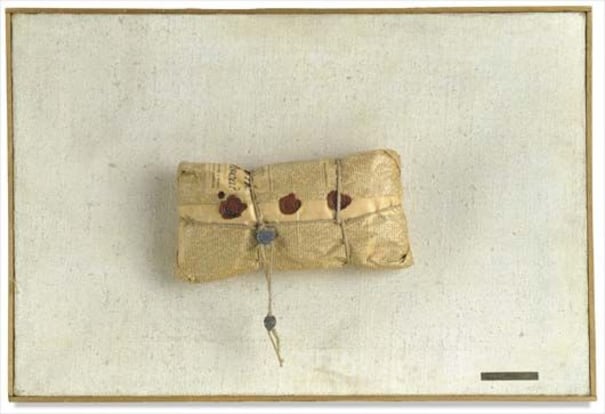
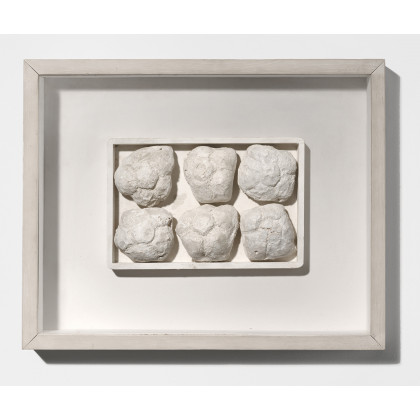
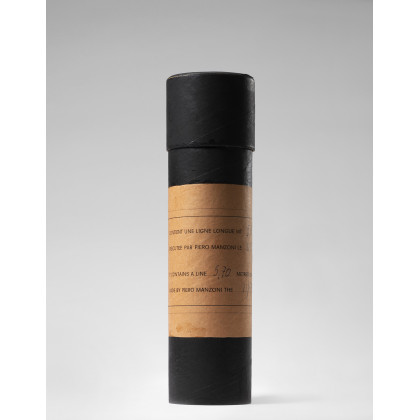

.jpg)
.jpg)
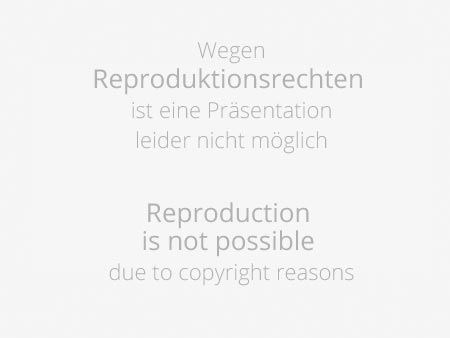
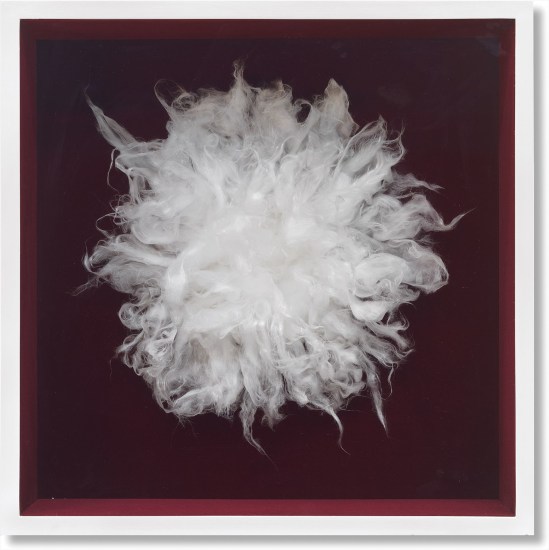
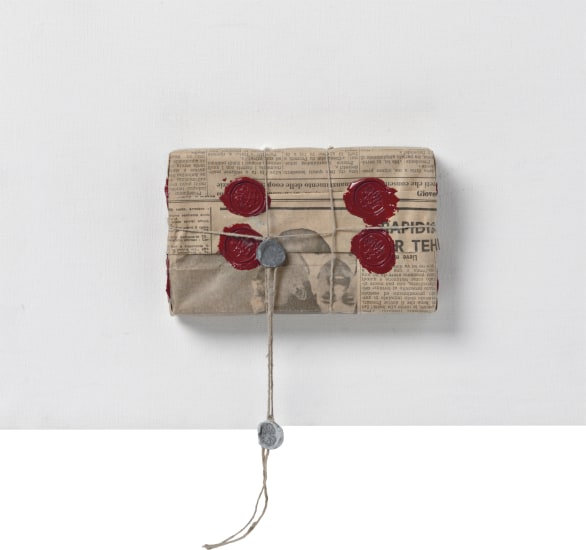
.jpg)


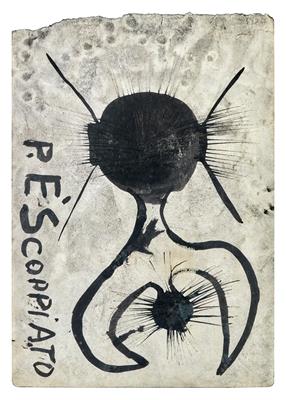

Testen Sie LotSearch und seine Premium-Features 7 Tage - ohne Kosten!
Lassen Sie sich automatisch über neue Objekte in kommenden Auktionen benachrichtigen.
Suchauftrag anlegen